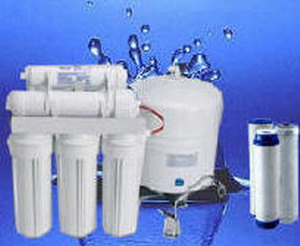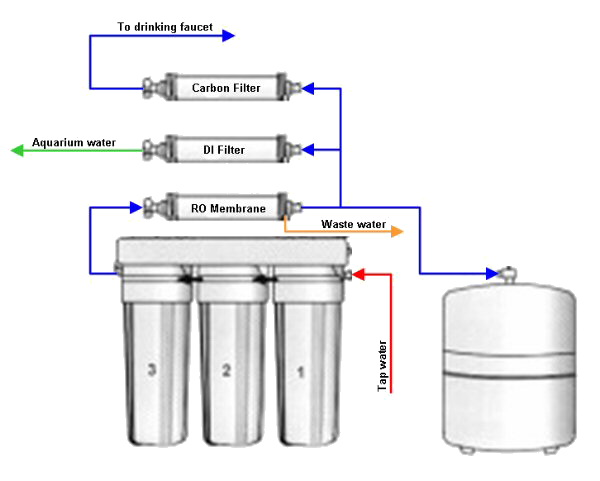

Reverse Osmosis = This is a purification method for tap-water.
Prefiltered tap water is pushed through a reverse osmosis membrane.
Water that makes it through is considered pure, while water that does
not, is sent through a special tube and is rendered impure. As it
relies on water which is able to pass through the membrane, it also
generates a large quantity of "waste" water which cannot be used. This
is one of the best, but slowest methods of tap water purification.
What constitutes a Unit? - As you can see in the above photo, an RO/DI
unit can consist of several chambers, each of which performs a
filtering method. Depending on the models purchased, they can come with
any number of "stages", some units even have UV stages for
sterilization, but for our purposes, a simple "home use" unit will do
just fine. As such, I would buy a unit that has at least the following
four stages built into it.
Sediment Filter - Removes the largest particles from the water, which
helps to prevent the finer filters next in line from becoming clogged
with material.
Carbon Filter - Removes by adsorbtion dissolved organics and chlorines which would damage the reverse osmosis membrane.
Reverse Osmosis Membrane - The actual membrane that allows only certain
sized molecules to pass through it. While it does a good job of
purifying the water, it does allow compounds / molecules of substances
that should be removed, which is where the dionizing filter comes into
play.
Dionizing Cartridge - Contains a resin which adsorbs those
elements that were small enough to pass through the RO membrane with
the water molecules.


A very detailed article on how a RO/DI unit works
A list of forum threads discussing the use of RO/DI units.